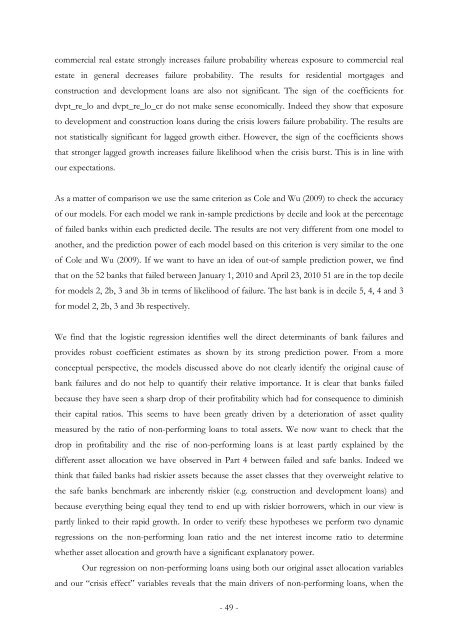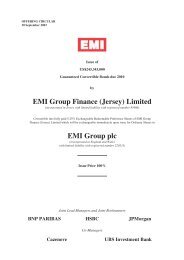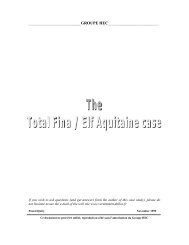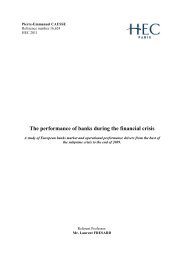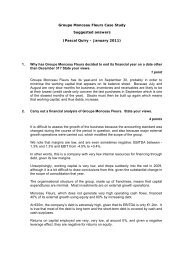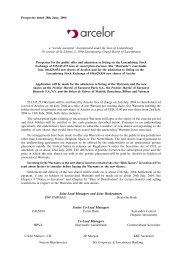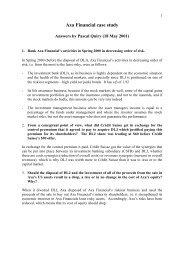Thesis_gd_final_vers.. - Vernimmen
Thesis_gd_final_vers.. - Vernimmen
Thesis_gd_final_vers.. - Vernimmen
You also want an ePaper? Increase the reach of your titles
YUMPU automatically turns print PDFs into web optimized ePapers that Google loves.
commercial real estate strongly increases failure probability whereas exposure to commercial real<br />
estate in general decreases failure probability. The results for residential mortgages and<br />
construction and development loans are also not significant. The sign of the coefficients for<br />
dvpt_re_lo and dvpt_re_lo_cr do not make sense economically. Indeed they show that exposure<br />
to development and construction loans during the crisis lowers failure probability. The results are<br />
not statistically significant for lagged growth either. However, the sign of the coefficients shows<br />
that stronger lagged growth increases failure likelihood when the crisis burst. This is in line with<br />
our expectations.<br />
As a matter of comparison we use the same criterion as Cole and Wu (2009) to check the accuracy<br />
of our models. For each model we rank in-sample predictions by decile and look at the percentage<br />
of failed banks within each predicted decile. The results are not very different from one model to<br />
another, and the prediction power of each model based on this criterion is very similar to the one<br />
of Cole and Wu (2009). If we want to have an idea of out-of sample prediction power, we find<br />
that on the 52 banks that failed between January 1, 2010 and April 23, 2010 51 are in the top decile<br />
for models 2, 2b, 3 and 3b in terms of likelihood of failure. The last bank is in decile 5, 4, 4 and 3<br />
for model 2, 2b, 3 and 3b respectively.<br />
We find that the logistic regression identifies well the direct determinants of bank failures and<br />
provides robust coefficient estimates as shown by its strong prediction power. From a more<br />
conceptual perspective, the models discussed above do not clearly identify the original cause of<br />
bank failures and do not help to quantify their relative importance. It is clear that banks failed<br />
because they have seen a sharp drop of their profitability which had for consequence to diminish<br />
their capital ratios. This seems to have been greatly driven by a deterioration of asset quality<br />
measured by the ratio of non-performing loans to total assets. We now want to check that the<br />
drop in profitability and the rise of non-performing loans is at least partly explained by the<br />
different asset allocation we have observed in Part 4 between failed and safe banks. Indeed we<br />
think that failed banks had riskier assets because the asset classes that they overweight relative to<br />
the safe banks benchmark are inherently riskier (e.g. construction and development loans) and<br />
because everything being equal they tend to end up with riskier borrowers, which in our view is<br />
partly linked to their rapid growth. In order to verify these hypotheses we perform two dynamic<br />
regressions on the non-performing loan ratio and the net interest income ratio to determine<br />
whether asset allocation and growth have a significant explanatory power.<br />
Our regression on non-performing loans using both our original asset allocation variables<br />
and our “crisis effect” variables reveals that the main dri<strong>vers</strong> of non-performing loans, when the<br />
- 49 -


